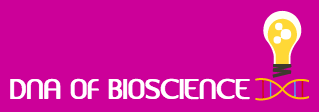On 26 th april 2019,Shivansh was in deep sleep inside my womb.We went for the doppler scan and radiologist Said baby movement is zero .She gave a score 0/10 for baby movement. My gynae by seeing the report got scared and planned for an immediate ceserian. As shivansh was only 30 weeks and 5 days the NICU team were informed ,so that they can take the baby to NICU .
At 8:03pm I delivered shivansh . I just heard the crying sound and then I was unconscious. I didn't see the baby .NICU team took my baby with ventilator support.My husband after seeing the baby rushed to me and said baby is very pretty and looking like you only .I was dying that time just to see my baby in NICU.After 4 days when I was little better ,sister took me to NICU in wheel chair.
I went to see my baby on 5 th day in a wheel chair .We need to wear an apron before entering to the baby's room .I entered the room with so many thoughts in my mind.I saw a very tiny baby inside the incubator was sleeping .I just sanitized my hand and open the door to touch the little hand .Suddenly he tightly hold my thumb. I don't know how shivansh knew its me who came to see him ,who came to touch him .
Shivansh body was full of wires,pipes,needles .I felt like why God is so cruel .Why it is happening with my baby ,why he is suffering from so much pain .Just attaching the lists of things which was in shivansh body -
1.Ventillator pipe for breathing
2.ECG wires to monitor the heart and pulse rate
3.Bp wire to monitor the blood pressure
4.Intravenous (IV) fluid needle
5. Wire to check the oxygen concentration
6.feeding pipe in the nose
7.so many stickers in his face to hold the wires.
8.Continous pricking in hand and leg for so many tests .
9.one wire in stomach to main tain body temperature.
10.Very very small diaper xs I think .
I couldn't stand for few minutes as because of jaundice he lost few gms wt and was looking very skinny . I was in deep pain inside. There were so many questions when doc will remove the wires ,pipes, needles ,when I can see my baby face completely without any wires and tubes ,when I can hold him ,when I can take my portable to home .
After 20 days I got the chance to hold my baby .Doc called it KMC (kangaroo mother care).Baby need to be in close contact with mother body so that baby can get the warm .Kmc improves the survivability rate and improve the weight gain .I used to do KMC for 6 hours in a day . It was very terrifying as I used to hold the baby with all wires ,pipes ,needles .I used to seat like a statue while holding the baby in the fear of may be some wire will come out ,may be oxygen desaturation will happen .




